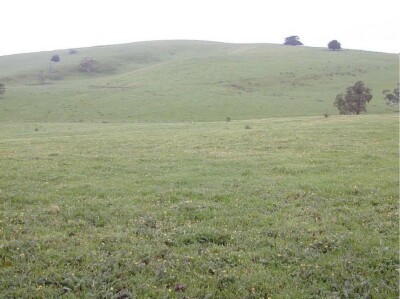| A11 | 0-20 cm | Dark brown (7.5YR3/3) clay loam, moderate granular structure (10-20 mm) parting to moderate granular structure (2-5 mm), weak consistence when moist, many medium roots. Clear and smooth transition to: |  |
| A12 | 20-40 cm | Dark brown (7.5YR3/4) clay loam heavy, moderate granular structure (20-50 mm) parting to moderate granular (5-10 mm), weak consistence when wet, many medium ferruginous nodules, many very fine macropores, areal porosity 0.5%, many very fine roots. Gradual and smooth transition to: |
 | Subsoil |  |
| B1 | 40-60 cm | Brown (7.5YR4/4), light clay, moderate granular structure (20-50 mm) parting to moderate granular structure (5-10 mm), weak consistence when wet, common medium ferruginous nodules, many fine macropores, areal porosity 0.7%, few very fine roots. Clear and smooth transition to: |
| B21 | 60-100 cm | Red (2.5YR4/6), medium clay, strong polyhedral structure (20-50 mm) parting to strong polyhedral structure (5-10 mm), firm consistence when moist, few medium ferruginous nodules, common fine macropores, areal porosity 0.1%, few very fine roots. Diffuse and smooth transition to: |
| B22 | 100-130 cm | Red (2.5YR4/6) medium clay, strong polyhedral structure (20-50 mm) parting to strong polyhedral structure (10-20 mm), firm consistence when moist, very few medium ferruginous nodules, common fine macropores, areal porosity 0.1%, no roots observed. Gradual and smooth transition to: |
| B23 | 130-150 cm | Red (2.5YR4/6) with many coarse distinct yellowish brown (10YR5/7) mottles, medium clay, strong polyhedral structure (20-50 mm) parting to strong polyhedral structure (10-20 mm), firm consistence when moderately moist, very few medium ferruginous nodules, common fine macropores, areal porosity 0.03%, no roots observed. |
 | 150-400 cm | Heavily weathered vesicular basalt, reasonably porous, medium (5 mm) live roots seen at 250-400 cm on one pit face only, rocks start a 250 cm and become more abundant and impenetrable at 330 cm. |




